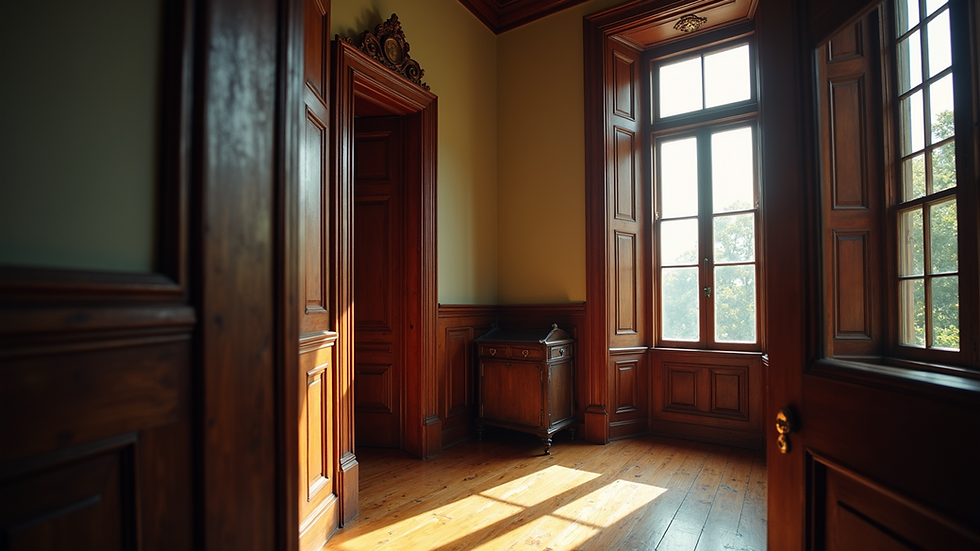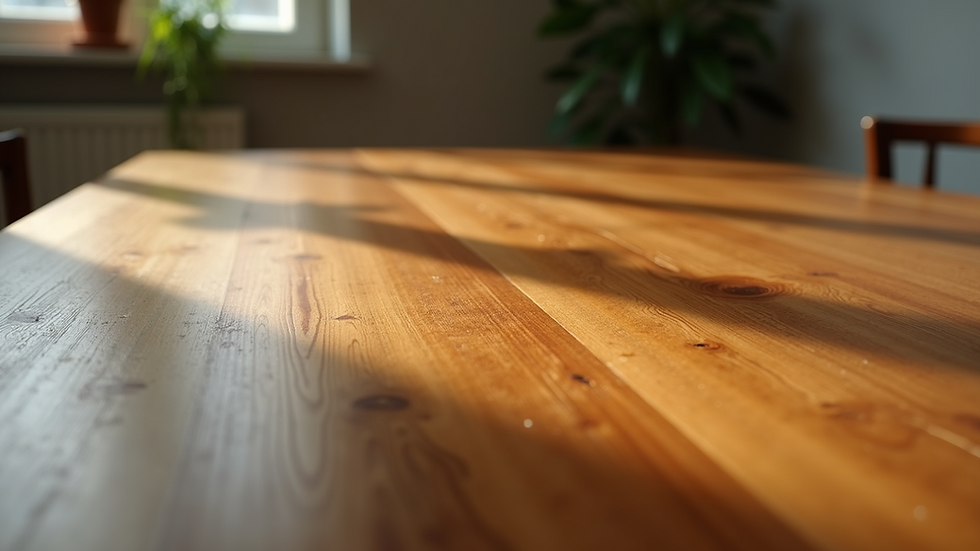Masterful Restorations: Handyman Skills for Historic Buildings
- brennaclancy
- Sep 26
- 4 min read
Restoring historic buildings is an art. It requires a unique blend of skills, patience, and a deep appreciation for the past. Whether you are a seasoned handyman or just starting out, understanding the nuances of restoration can help you preserve the charm and character of these structures.
In this post, we will explore essential handyman skills for restoring historic buildings. We will cover techniques, tools, and tips that can make your restoration project a success.
Understanding Historic Architecture
Before diving into restoration, it is crucial to understand the architectural style of the building you are working on. Each era has its own distinct features.
Victorian: Known for intricate woodwork and ornate details.
Colonial: Characterized by symmetry and classic proportions.
Art Deco: Features bold geometric shapes and vibrant colors.
Familiarizing yourself with these styles will guide your restoration efforts.
Essential Handyman Skills
Restoration requires a variety of handyman skills. Here are some of the most important ones:
Carpentry
Carpentry is often at the heart of restoration projects. Many historic buildings have wooden structures that may need repair or replacement.
Repairing Woodwork: Learn how to fix or replace damaged moldings, doors, and windows.
Custom Fabrication: Sometimes, you may need to create custom pieces to match the original design.
Masonry
Masonry skills are vital for buildings with brick or stone exteriors.
Repairing Mortar: Old mortar can crumble over time. Knowing how to repoint brickwork is essential.
Stone Replacement: If stones are damaged, you may need to replace them while ensuring they match the original.
Painting and Finishing
A fresh coat of paint can breathe new life into a historic building.
Choosing the Right Paint: Use paint that is appropriate for the building's age and style.
Techniques: Learn techniques like faux finishing to replicate historical styles.
Electrical and Plumbing Skills
Older buildings often have outdated electrical and plumbing systems.
Updating Systems: Knowing how to safely update these systems is crucial for both functionality and safety.
Preserving Original Features: Try to keep original fixtures when possible, as they add character.
Tools of the Trade
Having the right tools can make all the difference in your restoration project. Here are some essential tools every handyman should have:
Hand Tools: Hammers, chisels, and screwdrivers are fundamental for any restoration work.
Power Tools: Saws, drills, and sanders can speed up the process.
Specialty Tools: Depending on your project, you may need specific tools like a masonry trowel or a paint sprayer.
Planning Your Restoration
A successful restoration project starts with careful planning. Here are some steps to consider:
Research
Before you begin, research the building's history.
Historical Records: Look for old photographs or blueprints.
Local Regulations: Check if there are any restrictions on what you can change.
Create a Budget
Restoration can be costly, so it is essential to create a budget.
Estimate Costs: Include materials, labor, and any permits you may need.
Contingency Fund: Set aside extra funds for unexpected expenses.
Timeline
Establish a timeline for your project.
Set Milestones: Break the project into manageable phases.
Stay Flexible: Be prepared for delays, especially with older buildings.
Common Challenges in Restoration
Restoring historic buildings can come with its own set of challenges. Here are some common issues you may face:
Structural Issues
Older buildings may have hidden structural problems.
Inspect Thoroughly: Look for signs of damage, such as sagging floors or cracks in the walls.
Consult Professionals: If you find significant issues, consider hiring a structural engineer.
Material Sourcing
Finding the right materials can be difficult.
Local Suppliers: Check with local suppliers for authentic materials.
Reclaimed Materials: Consider using reclaimed wood or bricks for authenticity.
Balancing Modern Needs with Historic Integrity
It can be challenging to modernize a building while preserving its historic character.
Compromise: Find a balance between modern conveniences and historical accuracy.
Consult Experts: Work with preservationists if you are unsure about certain changes.
Case Study: Restoring a Victorian Home
Let’s look at a real-life example of a successful restoration project.
The Project
A couple purchased a dilapidated Victorian home that had been neglected for years. They wanted to restore it to its former glory while making it livable for their family.
Steps Taken
Research: They studied the home’s history and found old photographs to guide their restoration.
Budgeting: They created a detailed budget, including a contingency fund for unexpected repairs.
Carpentry Work: They repaired the original woodwork and replaced damaged sections with custom pieces.
Masonry Repairs: They repointed the brick exterior and replaced a few stones that were beyond repair.
Modern Updates: They updated the electrical and plumbing systems while preserving original fixtures.
The Result
The couple successfully restored the home, maintaining its historic charm while making it functional for modern living.
Tips for Successful Restoration
Here are some final tips to keep in mind as you embark on your restoration journey:
Take Your Time: Restoration is not a race. Take the time to do it right.
Document Your Work: Keep a record of your progress. This can be helpful for future repairs or for historical records.
Engage the Community: Involve local historians or preservation groups. They can offer valuable insights and support.
The Joy of Restoration
Restoring historic buildings is not just about fixing structures. It is about preserving stories and memories. Each project is a chance to connect with the past while creating something new.
As you develop your handyman skills, remember that every nail you drive and every brushstroke you make contributes to a larger narrative. Embrace the challenges and celebrate the victories.
With dedication and passion, you can become a masterful restorer, breathing new life into historic buildings for generations to come.

Your journey in restoration is just beginning. Embrace the skills you learn and the stories you uncover. Happy restoring!



Comments